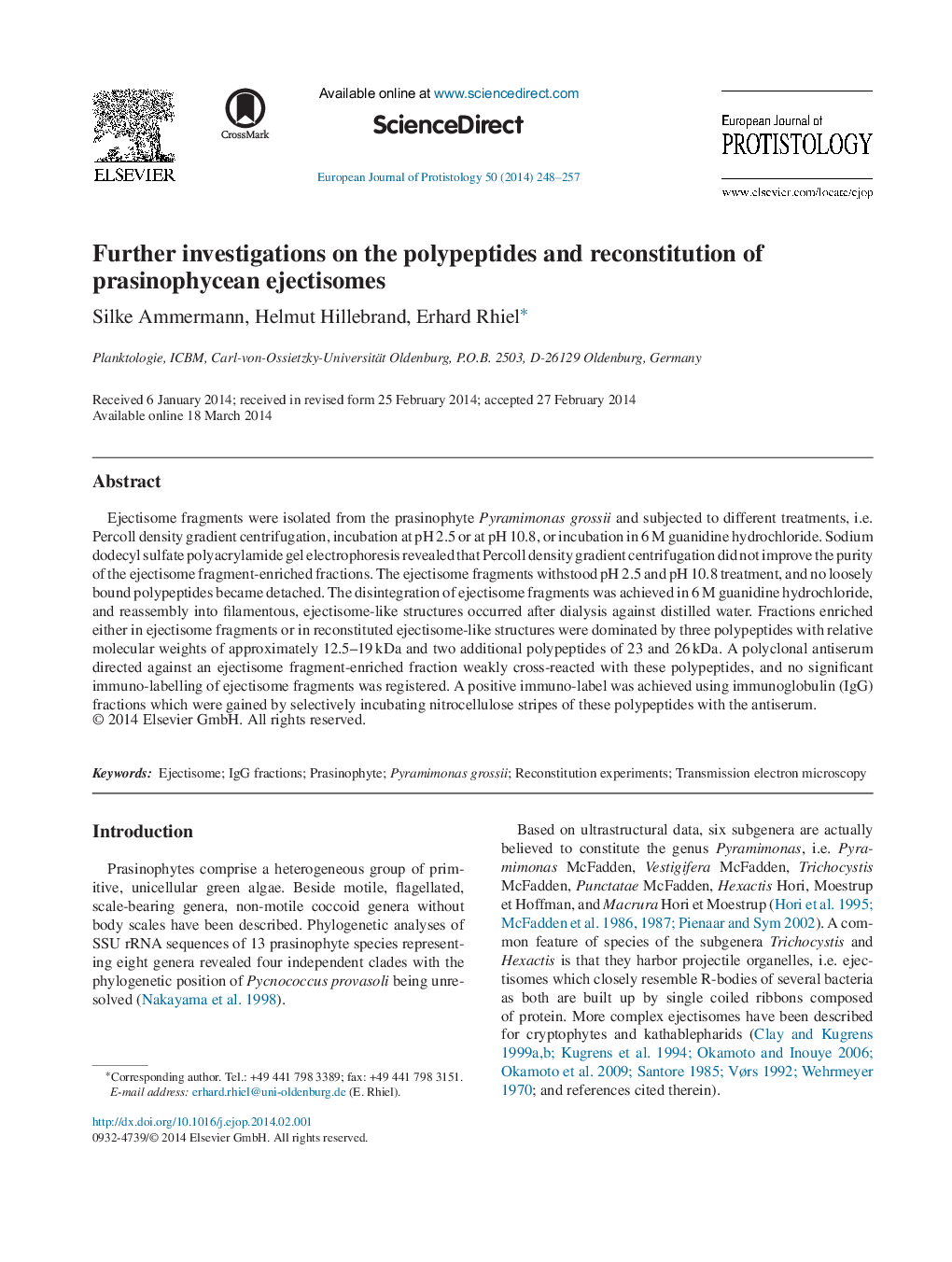| Article ID | Journal | Published Year | Pages | File Type |
|---|---|---|---|---|
| 8383271 | European Journal of Protistology | 2014 | 10 Pages |
Abstract
Ejectisome fragments were isolated from the prasinophyte Pyramimonas grossii and subjected to different treatments, i.e. Percoll density gradient centrifugation, incubation at pH 2.5 or at pH 10.8, or incubation in 6Â M guanidine hydrochloride. Sodium dodecyl sulfate polyacrylamide gel electrophoresis revealed that Percoll density gradient centrifugation did not improve the purity of the ejectisome fragment-enriched fractions. The ejectisome fragments withstood pH 2.5 and pH 10.8 treatment, and no loosely bound polypeptides became detached. The disintegration of ejectisome fragments was achieved in 6Â M guanidine hydrochloride, and reassembly into filamentous, ejectisome-like structures occurred after dialysis against distilled water. Fractions enriched either in ejectisome fragments or in reconstituted ejectisome-like structures were dominated by three polypeptides with relative molecular weights of approximately 12.5-19Â kDa and two additional polypeptides of 23 and 26Â kDa. A polyclonal antiserum directed against an ejectisome fragment-enriched fraction weakly cross-reacted with these polypeptides, and no significant immuno-labelling of ejectisome fragments was registered. A positive immuno-label was achieved using immunoglobulin (IgG) fractions which were gained by selectively incubating nitrocellulose stripes of these polypeptides with the antiserum.
Keywords
Related Topics
Life Sciences
Agricultural and Biological Sciences
Agricultural and Biological Sciences (General)
Authors
Silke Ammermann, Helmut Hillebrand, Erhard Rhiel,
